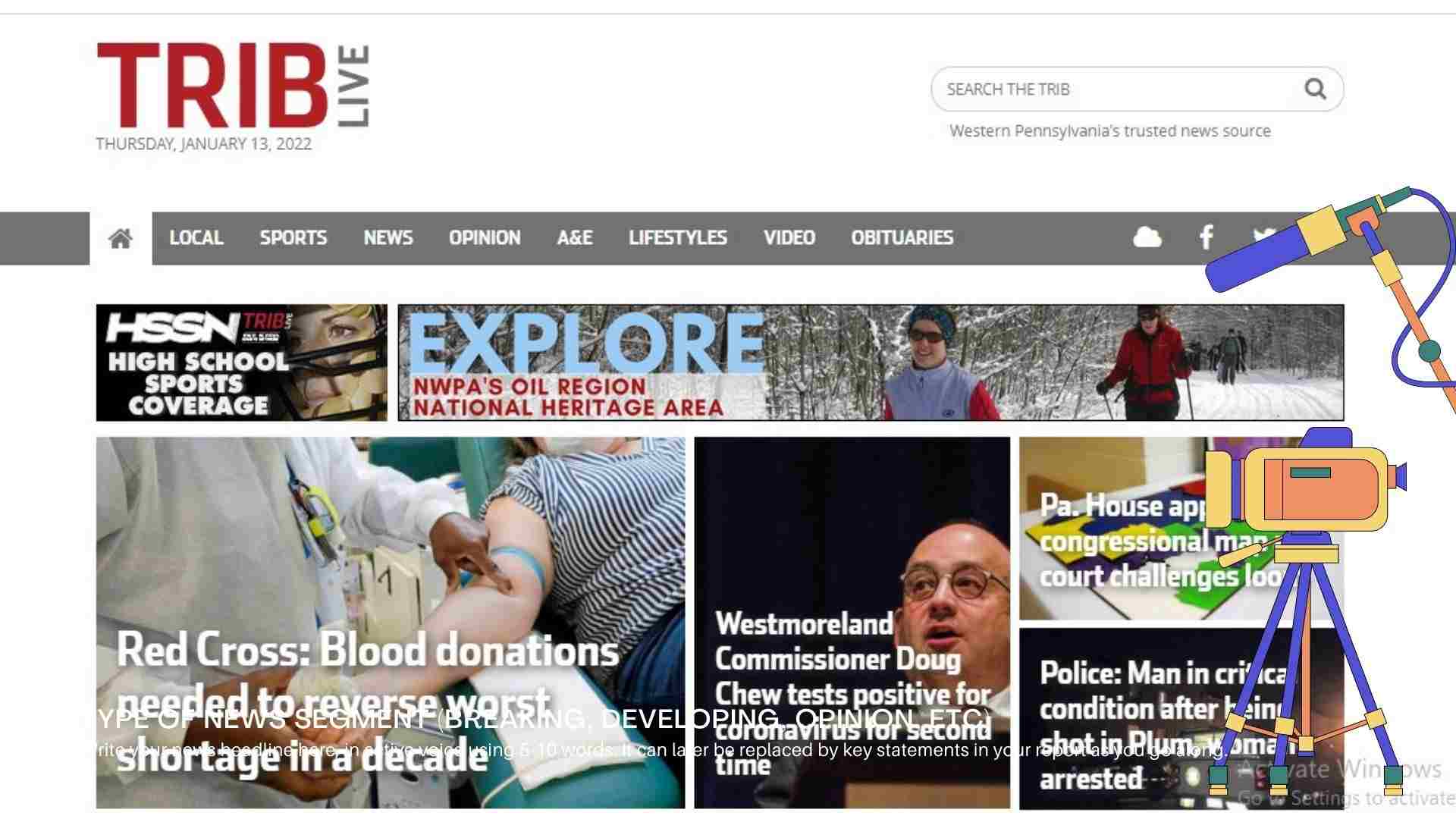In these busy lives, we hardly get time to read a newspaper on a regular basis. Still, some people try to follow a daily per day to keep their pace up with this fast-moving world. Thanks to the E-news system, which is making our lives easier. Some of the world-famous online newspapers daily are New York Times, Wall Street Journal, Washington Post, Reuters, ABC News, etc. But have you heard about Tribune Review? I am sure you have; otherwise, you would not have been here today.
Tribune Review or Pittsburgh Tribune-Review is the 2nd largest daily newspaper of Pittsburgh Metropolitan, Pennsylvania, United States. What is offered to the readers? Is it worth following? What are its pros and cons? Learn everything today from this detailed Tribune-Review Newspaper guide.
What Tribune Review Is All About?
Tribune Review, or Pittsburgh Tribune-Review, a.k.a., The Trib is Pittsburgh’s second-largest daily. Not only the largest, but also it is one of the oldest newspaper organizations in the United States. It came into being for the first time in 1811 as the Greensburg Gazette while in 1889, it merged with many more papers to form Greensburg Tribune Review. Later, in 1992, it became metropolitan-wide and started serving the entire Pittsburgh Metropolitan area.
Since 1st December 2016, it transformed into an all-digital format, following which, its popularity rose immensely. Even after changing the format, it occupies the 2nd position among the top daily newspaper list in Pennsylvania.
Where Is the Tribune Review Located?
As you all know now Tribune Review is a reputed English daily of the Pittsburgh Metropolitan area in Pennsylvania. But where is its headquarters exactly located? Well, the headquarter of Tribune-Review Newspaper (former known as Greensburg Tribune-Review) is at:
503 Martindale St. 3rd FloorPittsburgh, PA 15212 United States
At present, three geographic regions publish Tribune Review – Pittsburgh, Westmoreland, Valley News Dispatch. Owned by Tribune-Review Publishing company, the publisher here is none other than Richard Mellon Scaife.
How Did Tribune Review Come Into Being?
Just like the Wall Street Journal, or the New York Times, The Tribune-Review also has a history related to its origin. However, we are keeping it short over here to give you a crispy quality reading experience.
On August 22, 1811, it was founded as the Gazette. Until 1955, when they united to establish the Greensburg Tribune-Review, both journals continued to be published separately. The Pittsburgh Tribune-Review got under the ownership of Richard Mellon Scaife in 1970. Trib Total Media declared in November 2015 that it would reduce the home delivery of printed newspapers in favor of digital distribution. The sale of two days and six weeklies to West Penn Media was part of this reorganization.
National Attention And Investigation
Tribune Review gained national attention, and even international attention several times because of specific events. You can call them ‘Disasters’ or ‘blessing,’ but these are the factors that brought the organization under the limelight. Let’s do a quick review of one memorable investigation:
- Carl Prine, a newspaper investigative reporter of Tribune-Review, collaborated with CBS news magazine 60 Minutes on a program. This was after the September 11, 2001 attacks. It revealed the inadequacy of protection at the country’s most hazardous chemical factories. Eventually, this investigation took the recognition of the newspaper to a different level.
- The journalists and a CBS camera operator were arrested for trespassing at a Neville-Island plant while the inspection was ongoing. When the court decided that the story was valuable to the public, they were finally acquitted. On top of that, there was a two-part episode of the PBS docu-series – Exposé: America’s Investigative Reports in 2007. Its title was, “Think Like A Terrorist,” and this included Prine’s follow-up research.
What About Its Circulation?
The circulation of Tribune-Review Newspaper is also quite impressive. About 187,875 happens daily while 202,181 on Sundays only. Apart from Pittsburgh Tribune Review, there are Greensburg Tribune-Review, Westmoreland Tribune Review, and Valley News Dispatch Tribune-Review Obituaries.
The Tribune Review claims to have had the biggest readership growth of any newspaper in the top 48 American cities during the last five years. The number of Pgh Tribune-Review readers increased 17.8% between 2007 and 2012, says a Houston-based independent media-research organization. Shockingly, throughout Western Pennsylvania, it has strong ties with a variety of nonprofit and community-based companies and organizations.
Frequently Asked Questions (FAQ)
Q1. How Much Is The Sunday Tribune-Review?
The current edition of the Sunday Pgh Tribune Review arrives every week, packed with local, national, and international news. Other than this, you’ll get unique weekend features including Sunday’s Food and Travel sections, TV magazines, local advertisements, and discounts. One year of Sunday home delivery for $20 ($52 value).
Q2. Does The Tribune-Review Have A Print Edition?
After December 1, 2016, Tribune-Review Newspaper became an all-digital English daily. At present, it does not have any print edition. The readers of Pittsburgh Tribune-Review call their favorite daily as rib these days.
Q3. Who Owns The Pittsburgh Tribune Review?
Tribune Review Newspaper Daily is owned by Tribune Review Publishing Company. Furthermore, Richard Mellon Scaife is the owner/publisher here.
Q4.What Are The Two Major Newspapers In Pittsburgh?
The two major newspapers in Pittsburgh is:
- Pittsburgh Tribune-Review or Pgh Tribune Review
- Pittsburgh Post Gazette
What Do We Think About Tribune Review?
From our extensive research about Tribune review, we can conclude that it’s recommendable for news lovers. The quality of news, level of research and authenticity, it is truly unmatchable. It hasn’t got the title of 2nd largest daily in the metropolitan Pittsburgh without any reason.
Despite a national trend of declining readership, the news portal traffic is augmenting day by day. So, a big fat THUMBS Up for Pgh Tribune Review and all the Tribune-Review Obituaries from our end.
What’s your opinion about Tribune Review? Do not hesitate to share with us in the comment area.
Read Also:

























